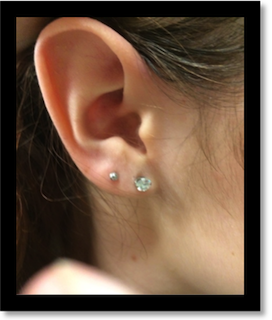
Allergic Reaction To Nickel Earrings. If you or your child are getting pierced use nickel-free earrings or body jewelry and definitely dont use any nickel-containing jewelry until your skin is completely healed over. Nickel is part of the metal used to make most jewelry today. Approximately 17 percent of women and 3 percent of men have an allergy to nickel a metal thats often used in earrings. Typically it will only affect the site of contacts such as the earlobes for earrings or the neck if you wear a necklace with nickel.

If you are allergic to nickel an allergic reaction contact dermatitis usually begins within 12 to 48 hours after exposure. If you or your child are getting pierced use nickel-free earrings or body jewelry and definitely dont use any nickel-containing jewelry until your skin is completely healed over. The last thing you need is to aggravate your earlobes if they are already red itchy sore or bleeding. Until that happens remember that a big risk factor for nickel allergy is piercing. If you cant comfortably wear a pair of regular earrings the odds are that youre having an allergic reaction to nickel. Some earrings contain metals that can cause allergic reactions resulting in ear sensitivity.
Rashes often occur on the earlobes or wrists because many earrings and watches contain nickel.
Features of contact dermatitis usually occur only in the area that has come in contact with nickel but it. If you or your child are getting pierced use nickel-free earrings or body jewelry and definitely dont use any nickel-containing jewelry until your skin is completely healed over. It can also cause dark skin splotches in some cases. If you experience some sort of allergic reaction to the white gold jewelry and have a rash or redness on your ears after wearing the white gold earrings it means that you are allergic to a specific metal component in the gold rather than the gold. Symptoms typically include redness itching rash and swelling around the earring area she says. If you are allergic to nickel an allergic reaction contact dermatitis usually begins within 12 to 48 hours after exposure.